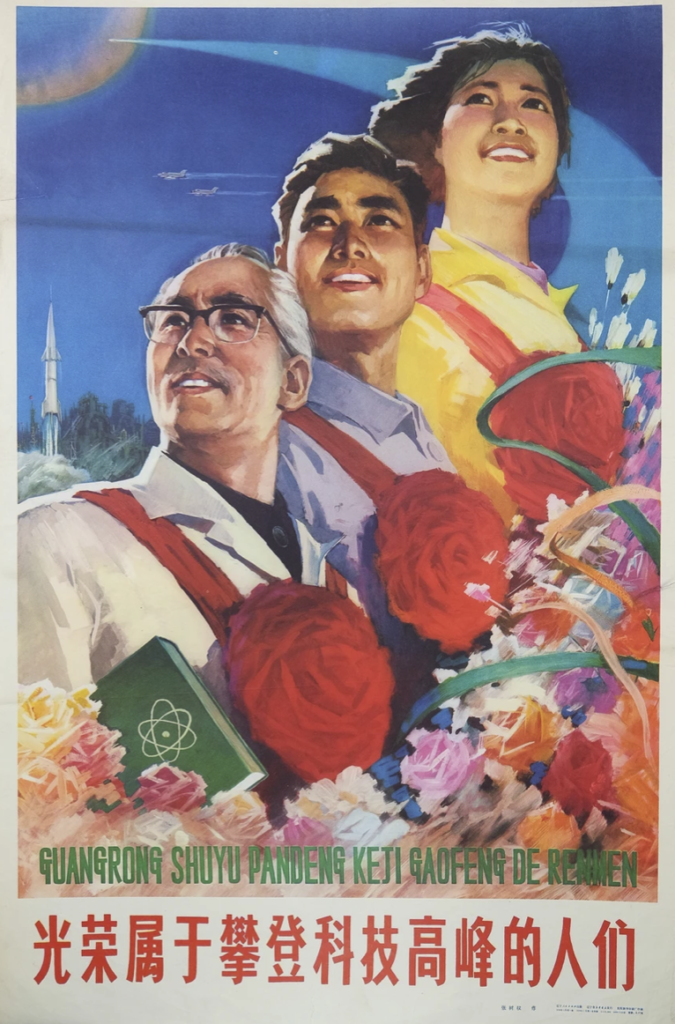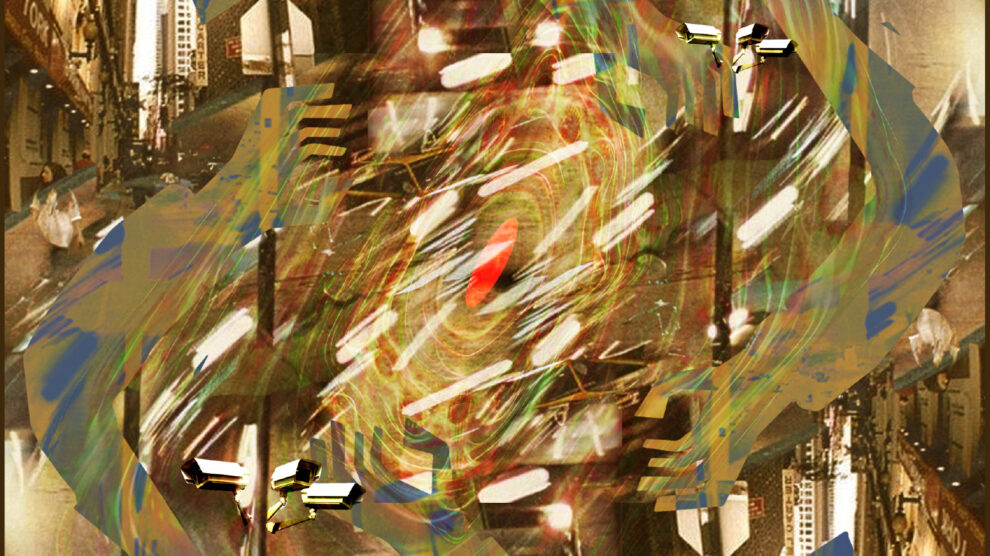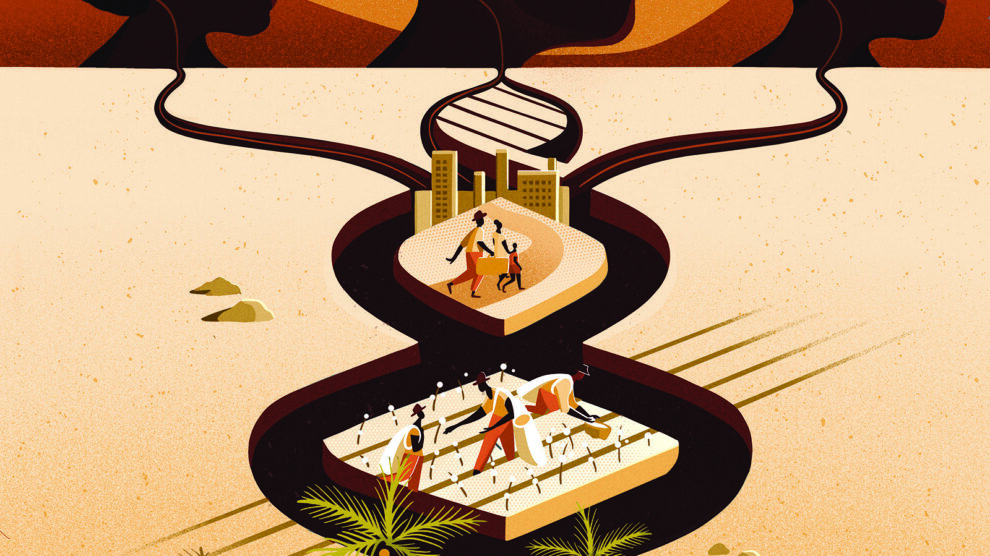Rereading China: Science Walks on Two Legs in 2021
Reflections on the 1978 Trip
By Anonymous Delegate
To me, the opportunity was irresistible: to visit revolutionary China, whose politics I had been reading and thinking about for years, which stood as an example to me and many circles of activists of what might be possible in our own country. China, as well as Cuba and Vietnam, had replaced the Soviet Union as exemplars of socialist states on their way to communism. We studied news from China about how the revolution was transforming its political culture as well as productive practicalities through policies that seemed inspired to us. Moreover, our visit was to take place at a moment of political inflection following the death of Mao: what policy changes would we see? The visit would follow up on one made only five years earlier by the political organization I most adhered to, Science for the People (SftP). Lastly, as plans developed, the trip would focus on the food system, a strong interest of mine from many angles. There was no way I was going to miss this!
By 1978 I had been working actively in SftP for several years. I often staffed our literature table on the University of California Berkeley campus, helped the chapter grow, and traveled up and down the West Coast trying to spark new chapters with considerable success. I placed our magazine at local bookstores, attended some national SftP conferences, and helped organize two in the Bay Area. My own politics were unsettled in terms of a specific line, and at this late date I cannot see clearly what I thought, aside from my strong sense that late-stage capitalism as practiced in the United States was both poisonous and doomed. I suppose I thought my role was to save people from getting caught under the collapsing rubble rather than blowing up the building itself. How I put this together with China’s experience I have little idea, except perhaps for the phrase “the Long March through the institutions.”1
Chapter members who wanted to go organized a China Study Group, which met frequently to discuss readings as well as correspondence with other SftPers. We committed ourselves to writing a second SftP China book (more about this later).
I must credit Kevin Cadogan for being so fierce about “getting the story,” as he put it. He not only led us through a course of readings on the history of China and its revolution, but also the role of science past and current. He himself did much more, filled notebooks with thoughts from his own readings, and learned some spoken and written Chinese.
At one point the group visited farms down the San Francisco Peninsula to see how strawberries and lettuce were harvested and packaged, which was enlightening in terms of the degree of mechanization and the onerousness of the remaining physical labor for the exploited farm workers. If I’m not getting my time sequence off, we produced an agitprop skit for China trip fundraising, in which actors represented the parts of a hamburger: bun, patty, tomato, and lettuce. Each told a tale of agribusiness and food system distortion. (I still have a script, and I have to say, it holds up!)
As the date neared, we selected our contingent from among the members of the China Study Group. In Hong Kong, we finally met the tour members from other chapters and settled in for a few days of organizing discourse before entering China on June 4. I will end this introduction here; I have organized the rest of my account to be thematic rather than chronological.
The Moment
Zhou Enlai died in January 1976; Mao Zedong died in September of the same year. A month later the power struggle crystallized into the rejection of the “Gang of Four” and the interim leadership of Hua Guofeng. Deng Xiaoping was rehabilitated at the 11th National Congress in August 1977, and began his rise to power which culminated in December 1978 with the removal of Hua from positions of power. Importantly, the same National Congress declared the end of the Cultural Revolution. These tumultuous developments certainly colored our experience. We heard, countless times, two political assertions: the “Gang of Four” was responsible for many errors during the Cultural Revolution; and the Cultural Revolution was “70% right, 30% wrong.” (How convenient, in so many ways! And yet, it would have been unreasonable to expect the Chinese authorities to explain complex political realities, still unfolding, to visitors of unknown subtlety or comradely motivation.) So, how were we going to evaluate the new political agenda we were encountering, which was so different from what the first delegation had heard and had reported in China: Science Walks on Two Legs?
Communes, the heart of the rural revolution, were not yet slated for dissolution, as far as we could see. But there were signs of change. Peasants were being allowed to sell vegetables from the private plots they had long had. We saw both sides of this “food chain”: the neat, well-tended private gardens fed the busy private stalls in urban markets, especially in Shanghai. My fellow delegate Kevin Cadogan had been hopeful but was now skeptical of the commune system’s ability to increase production to the scale necessary. He recently shared with me that seeing such an encouragement of private enterprise—which we then feared might become, and we now see has become, a transition to capitalism—“put a damper on writing a book when we returned home more than anything else.”
China Was Poor!
Time and again we were confronted with the China whose legacy was crushing poverty, and whose struggle to rise was only a generation old. Poverty was evident in the bareness or sparseness in every scene we encountered. Clothing, machinery, retail goods, and intensive use of every visible resource told its story. Returning to the United States after the trip was shocking in comparison, with the privileged classes’ blowsy plenitude and careless abandonment of still-useful items, infrastructural elements, and whole landscapes.
Perhaps the worst marker of poverty was in occupational health and safety. We visited a factory where cotton fibers filled the air while loom noise eradicated speech. We saw a barefoot worker operate a hydraulic latex cutter whose blade missed his toes by inches. Our agricultural experts questioned our hosts closely on the use of herbicides, pesticides, and fertilizers, and I recall that after the session we discussed with considerable concern the choices that had been made (for example, the use of Sevin insecticide and the short delay after which workers reentered the fields), and what they meant for farm workers as well as the general environment.
What we heard clearly was that China must solve its food problem. While no one anticipated famines, the choice for China was a greater degree of self-sufficiency versus increased imports, which would drain it of the capital it needed for growth through domestic investment. Behind this was certainly a political dispute about national self-reliance under socialism versus full entry into the international trade dynamic, with the risk of undercutting political emphasis—another big concern for us as leftists. Every commune we visited told us of increased yields, essential because there was literally no new farmland to be had. We saw half-hoops of bamboo spanning narrow irrigation channels, upon which vining plants grew. This both reduced evaporation and provided some additional space for cultivation. It was inventive and inspiring, but it could not be scaled very far. Could revolutionary China avoid overly intensive, dangerously chemical-dependent agriculture, and also avoid the pitfalls of reliance on food imports? Or were we witnessing the beginnings of a shift to engagement with global capitalism, against which small efforts at sustainable agriculture could not hope to succeed at scale?
“Restoring” Science
Above all, our trip was timed perfectly to observe, soon after the Cultural Revolution, how China intended to organize science. Most universities had just returned to normal operations after ten years of upheaval in which regular admissions were suspended. Professorial titles were once again in use. At every university and research institute we heard similar stories from professors and researchers about how the abuses of the Cultural Revolution (or was it the Cultural Revolution itself?) had tragically interrupted China’s scientific development. Research had been scrapped, institutions shut down, and careers stalled. Scientists at all levels had been sent to factories or the countryside; while this had been portrayed to the participants in the 1973 delegation as a positive way of educating scientists about the primacy of practice, it was often described to us in ways that sounded more like a form of punishment. Certainly we heard resentment over both their personal treatment and the derailing of important scientific work. I remember clearly seeing pain on the faces of our interviewees when they mentioned colleagues who had remained in factories or classrooms because they had been sidelined so early, or became so disheartened. (Of course, professional disappointments happen everywhere, and it’s certainly good for middle-school students to encounter active scientists as teachers.) Having worked subsequently in schools, I often sought to bring scientists and their projects into K-12 classrooms as a way of demystifying science for the students, and wondered about how to achieve the right balance of “pure” science with social engagement and justification for research and development. On the positive side of these stories, to me the most relevant and convincing, many of our interviewees told us that they did indeed learn from the peasants, that the peasants encouraged them to do as much useful science (e.g., phosphate absorption) as they could under the conditions, and that overall the experience was more positive than they knew at the time.
Even by 1978, things were changing. With respect to the supposed autonomous role of science, it was evident in the ubiquitous socialist realist posters that now displayed a scientist (white coat! eyeglasses!) in profile, eyes resolutely dawn-ward alongside, or in place of, the workers, peasants, and soldiers who populated Mao-era posters (Figure 1). Laboratories were reopening. Classes were starting up again, with new students as well as some of the ones whose education had been cut short. Admission began to be based on entrance exams rather than only work experience. High school science standards were being adjusted upward—this was important to our interviewees—in consultation with the universities so that incoming students would be prepared. The enthusiasm of our interviewees to begin their research again was dramatic and hopeful. The argument that research is real work, not leisure (!), began to gain traction, and scientists were permitted to spend five-sixths of their time on research. Decisions about research priorities were returned to the hands of “scholar committees” in each institution—this was perhaps the most decisive change of all. Mandatory time in the countryside was reduced, and only for those whose research really required it; pure laboratory researchers could stay in the lab. One idea in circulation was that factory workers and peasants would/should begin to suggest research themselves, so scientists could stay in the lab more—that’s where their demanding and necessary labor is best performed. Perhaps this meant that the principle of worker and peasant participation in science that had so impressed the first delegation would be maintained, while the “excesses” of the Cultural Revolution that had undermined research would be rectified? There was no way for us to know.

Figure 1. A typical example of posters from this period showing scientists in heroic roles similar to those more commonly occupied by workers, peasants, and soldiers. Zhang Shuquan, “Glory belongs to those who scale the peaks of science and technology” (光荣属于攀登科技高峰的人们), Liaoning People’s Publishing House, 1978. https://eastredgallery.com, accessed January 21, 2021.
Propaganda and Self-Propaganda
Even before we left on our trip, we heard and discussed the degree to which we would not see anything authentic. We had some degree of skepticism along these lines, but felt in general that if we were persistent and probing we would see and hear some details, some hollowness in even the best-prepared Potemkin village. Beyond this, we were not without a romantic view of China, always willing to consider a disculpatory explanation. And who were we, really, and what did we expect to achieve? Our thoughts ranged from “collecting evidence that other ways of organizing science are possible” to “preparing the United States for a revolutionary socialist transformation using much of China’s experience and ideology as a model.” Although we may have conceived of ourselves as comrades in a global movement, we came to China not as representatives of a mass movement and with no hope of taking significant power in the United States anytime soon. The best we could hope for—and not an insignificant goal—was to communicate to a wide audience in the United States that China offered a model of doing science that addressed many of the inevitabilities under capitalism: wealth disparity to the point of crushing poverty for some, pollution, distortion of objectives away from social benefit, abuse of natural resources, and continued intensification of market forces and property rights. If we located and gauged our audiences correctly, we could make powerful arguments against the status quo and in favor of radical change using both practical and visionary examples.
Our ability to convey these messages was perhaps our most positive value to the Chinese state, but the risk to them was that we would instead criticize China in front of a wide general audience. Obviously our hosts showed us what they wanted; to expect anything else would have been unrealistic. We had told our hosts in advance what kind of places we wanted to visit, but assumed, both incorrectly and inconceivably, that our final itinerary would be under discussion once we arrived. I remember being disappointed and suspicious as to why we could not change the itinerary they had arranged for us. But seriously, expecting last-minute flexibility in the face of logistical requirements was the height of bourgeois left-tourism, and I cringe to remember it.
There was a lot of China-worship on the left at the time. We took our cues from our activist peers, concerned that negative or even-handed critiques would be abused by the right wing. Consequently the discourse with our interviewees was often so stilted! I’m embarrassed to remember some of it. Too many of our questions were leading: “In designing the test instruments you use, does the factory seek advice from researchers?” to which we usually got vague answers which we filled in for ourselves. There in China, and later in our dissemination activities, we were too willing to edit out our concerns. I think we even went so far as to posit that in the face of poverty, the use of pesticides etc., even occupational health and environmentalism writ large, were second-order issues. Perhaps they are, in desperate times. The point is that it’s hard to communicate such dilemmas to audiences unaccustomed to those kinds of difficult choices.
There was also a kind of utopian romanticization. By this I mean looking at an aspect of Chinese science and really only seeing the charm of a “foreign” culture and markers of romanticized agrarian culture. I noticed this especially in some of our responses to factories, which were often unsafe for workers and/or the environment, and even unproductive in industrial engineering terms.
So, What Did We Actually See?
Minna Barrett, one of the members of the prior trip in 1973, says:
I am claiming, having heard it, that there was an opening, a discussion with some practice up and down in that society about what science is, how it could and should be executed, who it should serve, how to disseminate it and to who, and how to think about it. …. I heard the discussion with my own ears, I participated in it with my own voice and I know from my own experience and ability to discern that some of the people, leaders, science workers, students, medical workers, factory supervisors and workers, and elites were attempting to respond to the different orientations and values inherent in post-revolutionary society attempting to … find a way to serve ordinary people not merely or primarily power elites.
I agree that we saw, heard, and participated in honest discussions about how to build non-capitalist science. Furthermore, this occurred in a country struggling with all the usual issues of development plus a shifting political situation and an unfavorable international climate. I know that we were in rooms where there was a difference of opinion among our local hosts, palpable even through translation.
In the final analysis, I feel that we did get a handle on a key issue: was science automatically different and better under the People’s Republic of China’s version of socialism? There is, and possibly always will be, the debate over whether “science and technology are just tools” (the essentially technocratic argument that dominates US discourse and obscures issues of ownership and control) or whether they are inherently political at every level. SftP maintains, and explains powerfully and consistently, that they are inherently political. Environmentalists and anti-war activists began a process of dethroning “objective” science by exposing its political nature; this process has reached a new crescendo as the political tides turn against the tech monopolies and their devil’s bargain of convenience against privacy, autonomy, and diversity.
Expecting to hear perfect answers from our Chinese hosts in terms of the political theory of science would have been both unrealistic and naive. Minna Barrett put it well: “Of course, there was no way that from 1949 to 1973, a poor pre-socialist society was going to invent a ‘science operating system’ to address what it is about the current general approach to corporate/power elite serving science is often so destructive.”2 Although we did not hear from our Chinese hosts the precise critique of corporate science that SftP was most interested in disseminating, what we witnessed of science under socialism advanced our own ability to articulate that critique.
Conclusion
When we returned we began writing outlines for our book. Several chapters were drafted and exchanged for review. However, we eventually failed to complete the book commitment. Some of that failure came from our political confusion and disappointment as we saw the neoliberal path China had begun to take: leftists internationally were profoundly shaken by China’s new direction and split as to whether the Communist Party of China still represented a socialist model. But some was also due to the belief that a book might not be the best way to communicate our findings and message. I began an extensive series of public presentations, developed different slide shows for different audiences, and shared them with other disseminators. Others converted book chapters into articles for the SftP magazine. I don’t believe that we ever achieved as wide a circle of distribution as the material deserved, which makes this opportunity to reflect on the past so welcome.
Looking back to the transformation China has undergone since our trip, I also ruminate upon the changes in our own domestic political situation, and the role SftP and I played then and could play now. At times I am filled with despair; at other times I see…faint hope. Perhaps this is always how it is, or perhaps I am just old. I’m glad SftP is renewed, and I am encouraged by the energy and methods of its new constituents. I try to be a part of the renewal, but transposing my experience sometimes feels as jarring as a casual photo of 1978 China transposed on one at the same location in today’s China.
Back to Table of Contents
Notes
- The Long March (1934-5) refers to a pivotal stage in the Chinese Communist Revolution, when thousands of Communists marched across thousands of kilometers to converge at the revolutionary base area of Yan’an. It has remained a symbol of perseverance, courage, and solidarity for generations of leftists in China and around the world. The phrase “long march through the institutions” is attributed to Gramsci, and popularized by Rudi Dutschke. It refers to communist revolution in developed countries, through dedicated and thorough principled participation in existing institutions and eventual mastery over them, as well as the development of revolutionary counter-institutions.
- Private correspondence, March 18, 2020.





